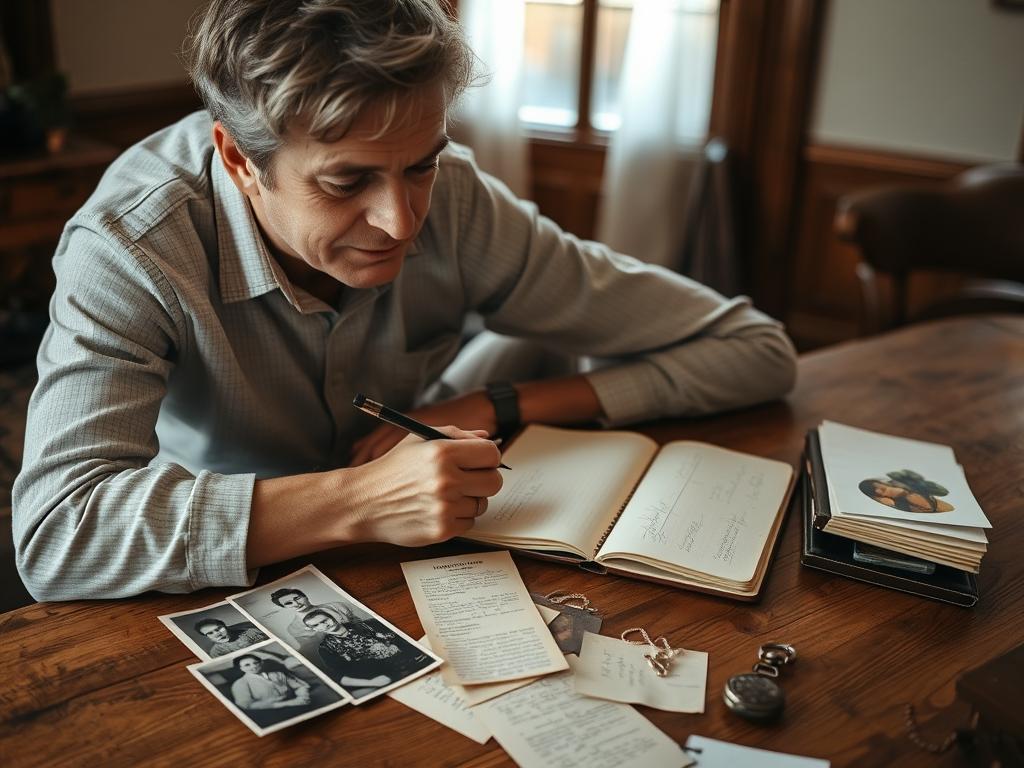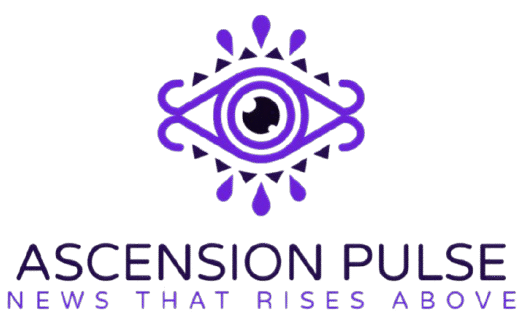
Understanding the Power of Ancestral Guidance
Ancestral guidance flows through generations, connecting us to inherited wisdom
Ancestral guidance isn’t mystical fantasy – it’s rooted in both cultural traditions and emerging science. Research in epigenetics suggests that experiences of our ancestors can influence how our genes express themselves today. A 2014 study from Emory University demonstrated that mice could inherit fear responses to specific smells that their parents were conditioned to fear, even though the offspring never experienced the conditioning themselves.
Similarly, research on collective trauma shows how historical events can shape behaviors and beliefs across generations. Dr. Rachel Yehuda’s work with Holocaust survivors and their children revealed biological markers of stress that appeared in both generations, suggesting trauma responses can be inherited.
Beyond science, cultural wisdom has long recognized this connection. Indigenous traditions worldwide maintain practices for consulting ancestral guidance. In many African traditions, ancestors are considered active participants in family life. Japanese Buddhists honor ancestors at household altars called butsudan. These practices recognize what science is now confirming: we carry our lineage within us.
“We are the dreams of our ancestors and the architects of our descendants’ future. When we listen to ancestral guidance, we honor both.”
Practical Methods to Connect With Your Ancestral Guidance
Connecting with ancestral wisdom isn’t about elaborate rituals or supernatural experiences. It’s about creating intentional practices that help you access the knowledge embedded in your lineage. Here are four powerful methods to establish this connection:

1. Ancestral Meditation Practice
This simple meditation creates a mental space where you can receive ancestral guidance:
- Find a quiet space and sit comfortably with your spine straight
- Take three deep breaths, imagining roots extending from your body into the earth
- Visualize these roots connecting to your ancestors, stretching back through time
- Ask a specific question about a challenge you’re facing
- Sit in receptive silence for 5-10 minutes, noting any thoughts, feelings, or images that arise
- Journal about your experience afterward
2. Interpreting Family Heirlooms and Objects
Physical objects carry energy and stories. Select a family heirloom or object passed down through generations and use this process:
- Hold the object in your hands and close your eyes
- Ask: “What wisdom does this object carry?”
- Notice any sensations, emotions, or memories that arise
- Research the historical context of when this object was created or used
- Consider how the object’s purpose relates to your current challenges
Even photographs can serve this purpose. Study the expressions and postures of your ancestors in old photos. What strengths do you see reflected? What hardships might they have endured that make your current challenges seem more manageable?
3. Analyzing Recurring Family Patterns

Our families often repeat patterns across generations – both constructive and challenging ones. Identifying these patterns provides insight into inherited strengths and potential pitfalls:
- Create a family pattern map by interviewing older relatives about family history
- Look for recurring themes: career choices, relationship patterns, financial habits
- Note how family members responded to major challenges
- Identify both positive patterns (resilience, creativity) and challenging ones (addiction, conflict avoidance)
- Reflect on how these patterns might be influencing your current situation
4. Ancestral Journaling Practice
Writing creates a bridge between conscious and unconscious knowledge. This journaling practice helps access ancestral guidance:
- Create a dedicated “ancestral wisdom” journal
- Begin each session by writing: “The wisdom of my ancestors speaks to me about [current challenge]…”
- Write continuously for 10 minutes without editing or judging
- Review what you’ve written, highlighting insights that feel significant
- Notice recurring themes or advice across multiple sessions
Many people report surprising insights emerging through this practice, often wisdom they didn’t consciously know they possessed.
Real-World Applications of Ancestral Guidance

The power of ancestral guidance becomes clear when we see it applied to real-life situations. Here are three examples of how this connection has helped people navigate modern challenges:
Career Uncertainty Transformed Through Lineage Wisdom
Michael, a 34-year-old marketing executive, felt increasingly unfulfilled in his corporate career. During an ancestral meditation, he recalled stories of his grandfather, a skilled carpenter who found deep satisfaction in creating with his hands. Though Michael had never considered creative work, this ancestral guidance led him to explore woodworking as a hobby.
The manual creativity awakened something in him. He began integrating design thinking into his marketing work, eventually transitioning to a role in product development that combined his business experience with creative problem-solving. “I realized I was carrying my grandfather’s creative genes but expressing them in a contemporary way,” Michael explains.

Healing Relationship Patterns Through Generational Awareness
Elena struggled with trust issues that sabotaged her relationships. Through family pattern mapping, she discovered three generations of women in her family had experienced abandonment. This awareness helped her recognize her tendency to expect betrayal was an inherited protection mechanism rather than intuition about her current partner.
“Understanding this wasn’t just ‘my issue’ but a family pattern gave me perspective,” Elena shares. “I could see how this response had protected my grandmother and mother in their circumstances, but wasn’t serving me in mine.” With this ancestral guidance, Elena began healing the pattern through therapy and conscious relationship choices.
Cultural Identity Strengthened Through Ancestral Practices
James, a third-generation immigrant, felt disconnected from his heritage and unsure of his identity. By researching traditional practices from his ancestral homeland, he began incorporating elements into his daily life – cooking methods, music, and a morning ritual his great-grandmother had performed.
“These practices ground me,” James reports. “When facing difficult decisions, I sometimes hear my great-grandmother’s sayings in my mind. Her wisdom helps me navigate today’s world with a sense of belonging I didn’t have before.”
“Ancestral guidance doesn’t pull us backward into the past; it provides the roots that allow us to grow confidently into the future.”
The Psychology of Inherited Resilience

Epigenetic research reveals how ancestral experiences can influence our resilience today
The concept of inherited resilience has gained scientific credibility through advances in epigenetics and psychological research. Studies show that both trauma and resilience can leave marks on our genetic expression that may be passed to future generations.
Psychologist Dr. Rachel Yehuda’s research found that children of Holocaust survivors showed similar cortisol patterns to their parents, suggesting stress responses can be inherited. However, these same studies revealed something remarkable – many descendants also inherited exceptional adaptability and resilience.
This scientific perspective helps explain why connecting with ancestral guidance can be so powerful. When you consciously engage with your lineage wisdom, you’re activating resilience patterns that may already exist within your biological makeup.
Cultural psychologists add another dimension to this understanding. Dr. Joseph Gone’s research with indigenous communities demonstrates how cultural practices that honor ancestors create psychological resilience by fostering:
- A sense of belonging and continuity
- Access to time-tested wisdom for solving problems
- Meaning-making frameworks that reduce existential anxiety
- Expanded identity beyond individual limitations
By consciously connecting with ancestral guidance, you’re not just accessing personal family wisdom – you’re engaging with a psychological process that humans have used for millennia to build resilience.

Creating Your Ancestral Wisdom Action Plan
The true power of ancestral guidance emerges when you move from concept to practice. These reflection prompts will help you create a personalized “Wisdom Inheritance” action plan:
Reflection Exercise: Mapping Your Family’s Journey
Consider these questions about your family history:
- What major challenges did your ancestors overcome? (wars, migrations, economic hardships)
- What skills or traits helped them survive these challenges?
- What values seem to have been important across generations?
- What strengths do you see recurring in your family line?

Reflection Exercise: Identifying Your Life Themes
Examine patterns in your own life journey:
- What challenges have repeatedly appeared in your life?
- What strengths do you consistently rely on?
- What values guide your important decisions?
- Where do you feel most connected to something larger than yourself?
Creating Your Wisdom Inheritance Action Plan
Based on your reflections, develop concrete practices:
- Select one ancestral strength you want to develop further
- Identify a family pattern you want to transform
- Choose a regular practice (meditation, journaling, object work) to connect with ancestral guidance
- Set specific times to review and refine your understanding
Embracing the Whispers of Ancestral Guidance

Your ancestors’ whispers are not distant echoes but living guidance encoded in your very being. Their wisdom flows through your family stories, your genetic inheritance, and the cultural practices that shaped your lineage. By consciously connecting with this ancestral guidance, you access a powerful resource for navigating today’s challenges.
Remember that your family tree is indeed a living compass, with roots that anchor you in inherited wisdom and branches that reach toward your unique future. The voices of your ancestors can serve as an inner GPS, not dictating your path but offering perspective from those who survived their own challenging journeys.
As you implement the practices in this article, approach them with both reverence and discernment. Not all inherited patterns serve your highest good, but even the challenging ones carry lessons. Your task is not to blindly follow ancestral patterns but to consciously engage with them – honoring their wisdom while evolving their legacy through your choices.
“We are not just our present moment. We are the culmination of all who came before us and the potential of all who will follow. When we listen to ancestral guidance, we honor both our roots and our branches.”






